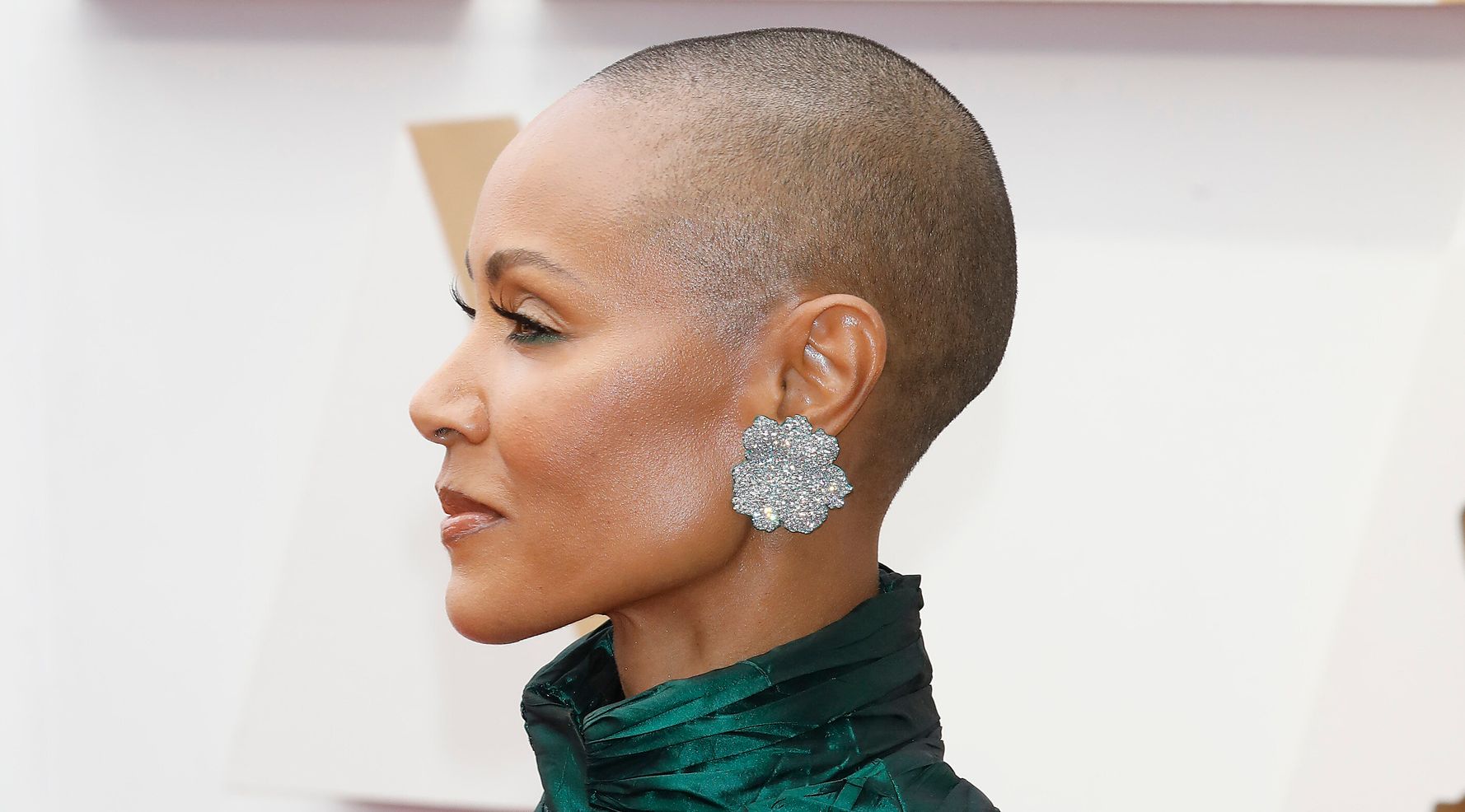The biggest moment from the Oscars on Sunday put Jada Pinkett Smith’s alopecia front and center, when Best Actor winner Will Smith slapped comedian Chris Rock after a joke about Pinkett Smith’s shaved head.
Pinkett Smith has spoken openly about her experience with alopecia, recalling the “terrifying” moment she first begin losing “handfuls of hair.” The condition is why she began shaving her head, and still does.
Alopecia is often incredibly misunderstood and underdiscussed, even though it affects millions of people. Here’s everything you need to know:
What is alopecia?
Alopecia refers generally to hair loss in parts of the body that usually have hair. As the American Academy of Dermatology Association explains, there are generally three types:
-
Alopecia totalis: When a person loses all hair on the scalp.
-
Alopecia universalis: When a person loses all hair on their body, which is very rare.
-
Alopecia areata: When a person develops patchy baldness somewhere on their body, including the scalp, beard area, eyebrows, eyelashes, armpits, inside the nose, or ears. Alopecia areata is an autoimmune disease (more on that below).
For people with alopecia, baldness tends to be the only symptom, and their bald patches are smooth. There are other underlying conditions that may lead to hair loss — from thyroid disorders to cancer treatments — but that’s not the same as when hair loss is the primary diagnosis.
What causes alopecia?
It depends! Alopecia areata is an autoimmune condition, in which a person’s immune system attacks their hair follices leading to anything from a few quarter-sized patches to much greater baldness. It’s not totally clear what causes the immune system to act that way, but experts think it’s probably a combination of genetic and non-genetic factors.
As the Cleveland Clinic says: “Alopecia areata is an unpredictable disease. In some people, hair grows back but falls out again later. In others, hair grows back and remains. Each case is unique.”
For other people, however, hair loss does not stem from autoimmune issues. Plenty of factors can play a role, including hairstyles that pull tightly, stress and damaging hair treatments. Nutritional deficiencies can cause alopecia, as can hormonal changes or even stressful life events. Hereditary-patterned baldness is common, too.
In many cases, it is not clear to a person experiencing alopecia — or their health care provider — why hair loss has occurred. Pinkett Smith, for example, has said medical tests have been unable to reveal the cause of her hair loss, suggesting she likely does not have the autoimmune version of the condition. She has said she believes it may be related to stress.
How common is it?
Estimates suggest that 1 of every 500 to 1,000 people in the United States have alopecia areata. It affects men and women equally, though it most commonly presents in adolescence or early adulthood. A 2018 study found that Black and Hispanic women are more likely to experience alopecia areata than white women.
Pinkett Smith is far from the only public figure who has opened up about alopecia. Democratic Rep. Ayanna Pressley of Massachusetts has been candid about her experience, as has actor Viola Davis.
Male and female pattern baldness are the most common types of alopecia. An estimated 30 million women and 50 million men in the U.S. have this type of hair loss.
What are treatments for alopecia?
Alopecia areata cannot be cured, but there are treatment options.
One common option is corticosteroids, which are anti-inflammatory drugs that may be given orally, as an ointment, or injected into the scalp.
Minoxidil (which in the U.S. goes by the brand name Rogaine) may also help stimulate hair growth, as can the prescription medication finasteride (Propecia) for men.
Doctors might also consider certain medications used to treat other autoimmune conditions.
Laser therapy is another option for those grappling with hereditary hair loss, though the Mayo Clinic warns more studies are needed to understand its potential long-term effects.
Many times, treating alopecia comes down to trying to determine the underlying causes, then targeting those.
If, for example, hair loss appears to be caused by emotional trauma, mental health experts may be able to help. If an underlying nutritional issue or hormonal changes are the issue, doctors will try to address those. Support groups can help people connect with others living with alopecia.
It may take a bit of trial and error.
“There are many treatments for alopecia areata,” the AADA says, “but no single treatment has been shown to work for everyone.”
The bottom line? If you have any concerns, talk to your doctor.
It is absolutely worth talking to your doctor about alopecia if it is a concern to you.
Before your visit, spend some time thinking about your specific circumstances. The Mayo Clinic recommends running through questions like: When did you first start experiencing hair loss? Has it been continuous or occasional? Has anyone in your immediate family experienced it, and what medications or supplements (if any) do you take?
And remember, you are not alone. Many people living with alopecia have become outspoken about the fact that their hair loss, whatever the root cause, does not define them. As one 25-year-old told Refinery 29: “I gave up the idea of having hair ever again a long time ago, which admittedly brings me a tremendous peace.”


